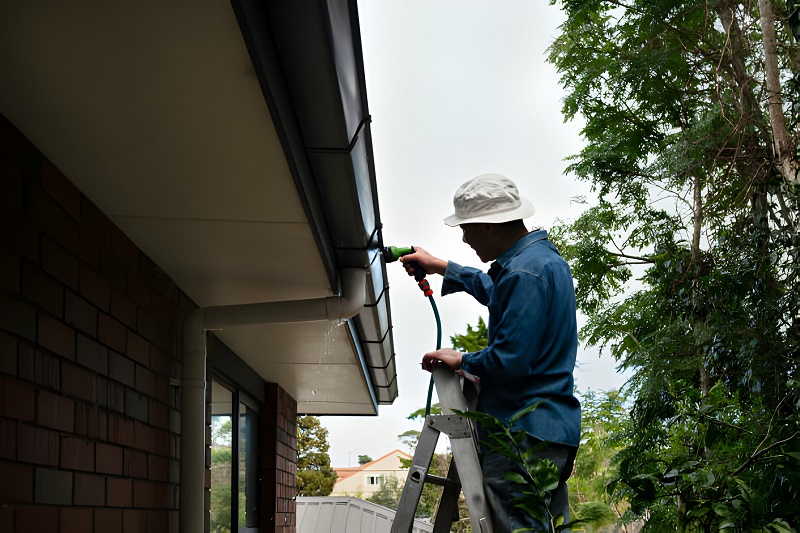A Closer Look at Guttering and Sustainability
As we usher in an era where responsible, sustainable choices are becoming the standard, our focus on ecological impact naturally extends to our homes. Have you ever considered the environmental implications of your home's guttering system? Are there alternatives that could make your home more eco-friendly, without compromising on aesthetic and functionality? In this post, we dive deep into the subject of sustainable guttering solutions, discovering the choices each one of us can make to align our homes with our environment-saving efforts.
Guttering is often overlooked in sustainability conversations, perhaps because of its innocuous positioning on the periphery of most home improvement discussions. But the truth remains that every aspect of our homes—from foundation to rooftop—carries an environmental weight. So, why not gutters, the unsung heroes of water management systems in our homes?
Through this lens of ecological consciousness, we will explore issues around standard guttering systems, their impact on the environment and possible eco-friendlier alternatives. By the end of this study, you will understand why sustainable guttering is not just an option but a necessity in our pursuit of greener homes.
Why Consider Sustainable Guttering: Unpacking Environmental Concerns
Firstly, let's address the 'why'. What's the likelihood that our traditional guttering systems are causing harm to the environment? By reputation, metal gutters, especially those made of aluminum and copper, are durable and reliable. However, their manufacturing process consumes significant amounts of energy and results in detrimental emissions.
Moreover, when these gutters reach the end of their life spans, they become non-biodegradable waste, contributing to our growing landfills. Some end up in the hands of scrap metal dealers, further consuming energy in the recycling process.
In addition, the mismanagement of rainwater, often a case in inefficient guttering systems, can lead to soil erosion and water wastage. Both these factors contribute to an unhealthy ecosystem surrounding our homes.
What Makes a Gutter System Sustainable: Balancing Functionality with Eco-Friendliness
When looking for a sustainable guttering option, consider the principles of eco-design. This includes high durability and efficiency, minimal environmental impact during manufacture, and recyclability at the end of the product's life.
Steel, surprisingly, ranks highly in this regard. While its manufacturing process is energy-intensive, steel is incredibly durable, efficient, and highly recyclable without losing quality over time. In terms of water management, designing your guttering systems optimally helps to prevent water-related issues such as soil erosion and wastage.
A noteworthy contender in sustainable guttering is the emerging option of green or living gutters that integrate vegetation in their design. They not only slow down water flow, thereby reducing soil erosion, but also add a dash of biophilic charm to your home's façade.
Pros and Cons of Sustainable Guttering
Like every home improvement choice, sustainable guttering comes with its own set of advantages and potential drawbacks.
On the plus side, sustainable gutters have a smaller carbon footprint, they help better utilize rainwater, and reduce landscaped soil erosion. The eco-aesthetic appeal of green gutters is an added perk, combining beauty and usefulness.
However, on the downside, sustainable options such as living gutters require regular maintenance and can be pricey. Additionally, steel, while highly sustainable, may not be preferable for all because of high initial costs and possible aesthetic incongruity compared to other home elements.
The Interplay of Architecture and Sustainability: A Case for Sustainable Guttering
With modern architecture moving towards sleek, minimalist aesthetics, how does a bulky, green gutter fit into the picture? Taking this into consideration, sustainable guttering isn't necessarily about choosing the 'greenest' option available but rather about finding a system that aligns with your home's architectural style whilst still meeting sustainability benchmarks.
Navigating the Costs of Sustainability: Is Green Guttering Worth It?
The initial cost of sustainable guttering systems, like any investment in sustainability, might be higher than standard solutions. Yet, these costs often pay for themselves in the long run.
Whether it's the lower maintenance costs of a durable steel system or saving on water bills with an efficient rainwater collection setup, sustainable gutters can prove to be the more prudent choice in the long run, from both financial and environmental perspectives.
Conclusion:
Approaching sustainability from the perspective of our guttering systems might seem trivial. But as we delve deeper into the narrative of sustainability, we realize that every action counts, with each 'green' choice we make impacting the overall health of our planet.
Sustainable guttering emerges not just as a trend but as a necessity, aligning our home-improvement aspirations with our climate-conscious responsibilities. Yes, it comes with its financial and aesthetic considerations, but like all things sustainable, it also brings a reward in the form of a better future– a reward that is surely worth the investment?
It's time we start noticing our gutters. They're more than just a conduit for rainwater. They're a symbol of our commitment to harmonious living and a nod to our responsibility towards the planet we call home. So, next time you walk around your house, give those gutters a thought. Could they use a sustainable upgrade?








0 comments